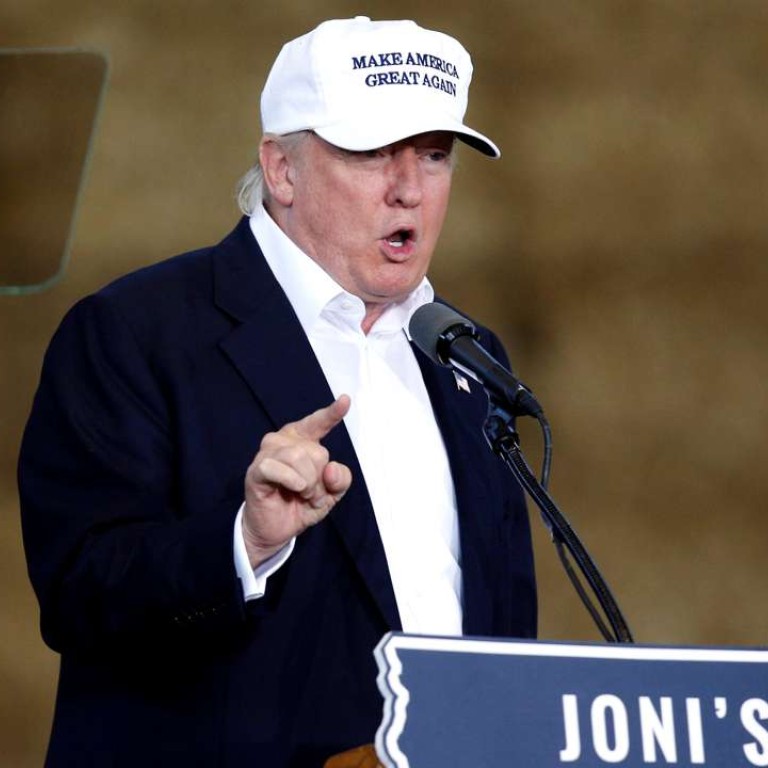
The Great Wall of Trump: expensive, unrealistic and useless, experts say
Even as Donald Trump vacillates between toning down his harsh anti-immigrant rhetoric and reaching out to minorities, he remains unshakable on one central campaign promise: building a wall on America’s border with Mexico.

“We are going to build a great border wall to stop illegal immigration, to stop the gangs and the violence and to stop the drugs from pouring into our communities,” the Republican presidential candidate said as he accepted his party’s nomination last month.
It’s an idea experts say is as useless as it is unrealistic. Though that has hardly given Trump pause.
“I will build the greatest wall that you have ever seen,” he elaborated at a recent rally. “That’s a Trump wall, a beautiful wall!”
“And who’s going to pay for it?” he asks at his events.
“Mexico!” his energised supporters roared back.
Trump says his success as a construction magnate guarantees he can build such a wall but has provided few details.
The 3,200km US-Mexico border runs from the Atlantic Ocean to the Pacific, crossing arid, sparsely populated territory as well as urban centres thick with inhabitants.
After initially promising to build a new barrier running the entire length of the border, Trump now says only half actually needs to be covered because the physical terrain acts as a natural barrier along the rest.
But if he’s clear about the length, what about the height? Trump has variously mentioned 10.5 metres up to 27 metres.
“The wall just got 10 feet higher!” he’s said when Mexican officials repeated that their country has no intention of paying a dime.

He is just as vague about the cost – US$4 billion, then “six or seven” billion, “probably eight”, and “10, maybe 12”, before finally settling at “around US$10 billion.”
However, architects and engineers dismiss that figure as entirely unrealistic given even the minimum predictable costs.
Trump’s plan calls for prefabricated concrete panels reinforced with steel rods, heavy materials that present immense logistical challenges: paving roads for access, building multiple sites for pouring concrete and hiring armies of workers over several years.
The wall would require foundations deep enough to ensure stability and discourage tunnelling.
A 12-metre concrete wall using a “post and panel” system sunk three metres below ground would cost at least US$26 billion, according to the Texan wall expert Todd Sternfeld.

Trump dismisses such figures, however, pointing to China’s ancient, 21,000km-long Great Wall.
“They didn’t have cranes. They didn’t have excavation equipment,” he says. “We need 1,000 miles and we have all of the materials.”
Key differences that make the comparison irrelevant go unmentioned – that China’s wall consists of separate parts built over centuries at a human cost that’s unthinkable today.
Obstacles in the way of the Great Wall of Trump, as he’s called it, don’t stop there.
In the vast American South, border areas are often private property. Securing the land for a wall would require multiple expropriation procedures and legal headaches.

It has been tried before. The border already is bristling with barriers and fences, much of it built through the US$2.4 billion Secure Fence Act signed by former president George W. Bush in 2006.
The Rio Grande River, which forms the border between Mexico and Texas, presents another major obstacle.
Laws prohibit construction that would impede flood management or interfere with the sharing of resources.
A treaty meanwhile prohibits either country from diverting the flow of water.
But beyond the multitude of intractable obstacles facing a Trump wall, its basic sense remains highly questionable.
“If you build a 30-foot wall,” the comedian John Oliver has said, “all it’s going to do is create a market for 31-foot ladders.”
Critics point out that drug traffickers have found ways of transporting their products over or under border barriers whatever their size.
Moreover, as a 2006 study by the Pew Hispanic Centre found, nearly half of illegal immigrants in the United States enter through classic entry points such as airports before simply staying on their expired visas.
Speaking in Des Moines, Iowa on Saturday, Trump said he would crack down on people who overstay, proposing a tracking system to ensure illegal immigrants can be quickly removed, and an electronic verification system to prevent illegal immigrants from gaining access to social security and other benefits.

“If we don’t enforce visa expiration dates, then we have an open border - it’s as simple as that,” he said.
Last week he said he was softening his plan to deport all 11 million illegal immigrants, which drew fire from conservatives who wanted him to stand fast after he won the Republican presidential nomination in large part by his hardline stance.
In outlining his views, Trump said addressing illegal immigration is important to helping Americans find jobs.
“Every time an African American citizen, or any citizen, loses their job to an illegal immigrant, the rights of that American citizen have been violated,” he said. “Equal protection under the law must include the consistent application of our immigration laws.”
Trump said his first priority upon taking office next January would be the immediate deportation of thousands of illegal immigrants who are still in the US despite having committed crimes.
“These international gangs and cartels will be a thing of the past. Their reign of terror will be over. In this task, we will always err on the side of protecting the American people – we will use immigration law to prevent crimes, and will not wait until some innocent American has been harmed or killed before taking action,” he said.
He did not explain how his plan would affect illegal immigrants who have been in the US for decades and obey the law.

.png?itok=arIb17P0)